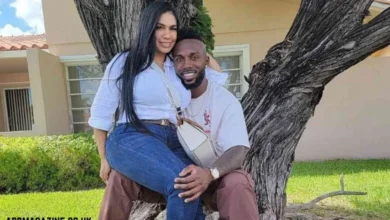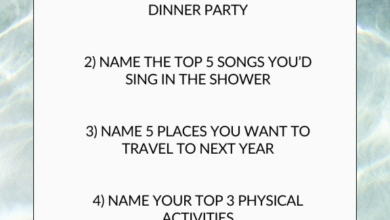What Is a Hag? Exploring the Origins, Meanings, and Cultural Impact of This Mysterious Figure
The word “hag” might instantly bring to mind an old, crooked woman stirring a bubbling cauldron in a dark forest. But there’s a lot more to this word than spooky folklore or Halloween stereotypes. Over centuries, the image of the hag has evolved—from ancient mythology to modern media—and it’s been both feared and misunderstood.
So, what exactly is a hag? Where did the concept come from, and how has it shaped the way we view age, power, and femininity? In this deep dive, we’ll explore the mythological roots, literary appearances, and modern interpretations of the word hag—and why it’s more complex than it first appears.
The Etymology of “Hag”: Where Did the Word Come From?
Let’s start with the basics: where does the word “hag” even come from? The term has deep linguistic roots, and understanding them helps unpack the layers of meaning it has picked up over the centuries.
The word “hag” comes from the Middle English word hagge, which in turn is believed to come from the Old English hægtesse, meaning a witch or female demon. This older term likely shares roots with similar Germanic words like the Dutch heks (witch) and the German Hexe. In other words, from the start, the term has been wrapped up in a kind of mythical, magical fear—and almost always tied to women.
Interestingly, the idea of the hag overlaps with the crone in the classic “Maiden-Mother-Crone” archetype found in pagan traditions What Is a Hag?. While the maiden represents youth and purity, and the mother stands for fertility and nurture, the crone (or hag) symbolizes wisdom, endings, and transformation. But over time, that symbolism turned darker.
In Christianized Europe, where pagan beliefs were often demonized, the hag began to be viewed less as a wise elder and more as a dangerous, unnatural woman—someone associated with sorcery, evil, and malevolence. This shift in meaning tells us a lot about how society historically viewed aging, especially in women.
The Hag in Mythology and Folklore
If you dive into global mythology, you’ll find that hags or hag-like figures show up everywhere—and they’re not always the villains you might think they are.
Celtic Folklore
In Irish and Scottish mythology, there’s the Cailleach, a powerful old woman associated with winter, storms, and creation. She’s considered one of the oldest deities in Celtic lore. The Cailleach is neither purely evil nor good; she represents the cycles of nature, especially the harshness of winter that eventually gives way to spring. Though fearsome, she’s also a symbol of necessary change and resilience.
Slavic Myth: Baba Yaga
No discussion about hags would be complete without Baba Yaga, the famous witch of Slavic folklore What Is a Hag. Living in a magical hut that stands on chicken legs, Baba Yaga is unpredictable—sometimes helping lost souls, other times devouring them. She’s a complex figure who represents ancient wisdom and primal power, and though she’s often feared, she’s also respected.
Greek Mythology: The Graeae and Hecate
In Greek myths, we find Hecate, the goddess of witchcraft, ghosts, and magic—often depicted as an old woman with deep knowledge of the occult. Then there are the Graeae, three old sisters who shared one eye and one tooth among them, guardians of secret knowledge. Again, we see the recurring theme: hags as holders of hidden truths and mystical insight.
So while hags have been painted as creepy or evil in some stories, many traditions actually view them as figures of power, wisdom, and even protection—albeit with a dark, mysterious twist.
The Hag in Literature: From Shakespeare to Fairy Tales
Hags show up everywhere in literature, from classic plays to fairy tales. And while they often play the villain, their roles are far more layered than simple black-and-white caricatures.
Shakespeare’s Weird Sisters
In Macbeth, the “Weird Sisters” (often referred to as witches or hags) are arguably some of the most iconic examples. They speak in riddles, manipulate fate, and embody the fear of powerful, uncontrollable women. But are they evil? Or are they simply revealing the darkness already within Macbeth himself? Shakespeare used the hag archetype not just for shock, but to reflect on human ambition and destiny.
Fairy Tale Villains
Think of the classic fairy tale witch or crone—the old woman in Hansel and Gretel, the evil stepmother in Snow White, or the cursed enchantress in Sleeping Beauty. These figures are often described with “hag-like” features What Is a Hag: hunched backs, hooked noses, and magical powers used for manipulation or harm.
But many of these stories were originally warnings about straying from home, disobeying parents, or mistrusting strangers. Over time, the hag became a visual symbol of danger—especially female danger. That stereotype, unfortunately, stuck around.
Modern Interpretations
More recent literature and media have started to reclaim the hag archetype. Writers now use hags as metaphors for transformation, feminine strength, and the rejection of societal beauty standards. Books like Circe by Madeline Miller and movies like The Witch explore these ideas with nuance, making the hag a more complex and even sympathetic figure.
The Modern Use of “Hag”: Insult, Empowerment, or Both?
In today’s language, calling someone a “hag” is usually meant as an insult—often targeting older women. It conjures up images of ugliness, bitterness, and irrelevance. And that says more about our society than it does about the word itself.
Ageism and Misogyny
Let’s be honest: most uses of “hag” in modern language are rooted in ageism and misogyny. It’s not just about someone being old—it’s about punishing women for aging. While older men get to be “distinguished” or “wise,” older women are more likely to be labeled as “hags” or “witches.” That double standard reflects a deep cultural discomfort with female aging and power.
Reclaiming the Word
But not everyone accepts that narrative What Is a Hag. In recent years, some feminists and writers have started to reclaim “hag” as a symbol of freedom, knowledge, and spiritual maturity. There’s a growing movement to embrace the crone or hag archetype as a positive role model—someone who lives outside societal norms and doesn’t care what people think.
Books like The Crone by Barbara G. Walker and online communities that celebrate “crone wisdom” are helping redefine what it means to age with power and grace. So while “hag” might still carry a sting, it’s slowly being transformed into a badge of honor by those brave enough to challenge the stereotype.
Why the Hag Still Matters Today
So why does the hag still matter? Why should we care about this ancient, wrinkled figure who lives in the woods and mutters spells?
A Mirror for Society
The hag reveals a lot about what society fears—especially around aging, independence, and female power. The fact that we still use “hag” as a slur tells us we haven’t entirely made peace with those ideas.
A Symbol of Transformation
In myth and story, hags often appear at turning points. They test the hero, offer cryptic advice, or open doors to the unknownWhat Is a Hag. They are threshold figures, standing between one world and another—symbolizing change, challenge, and personal growth.
A Call to Embrace Complexity
Finally, the hag reminds us that not everything needs to be polished, pretty, or easy to understand. Sometimes wisdom comes with wrinkles. Sometimes power looks a little scary. And that’s okay.
Final Thoughts: More Than Just a Scary Word
The word “hag” has taken a long, winding journey—from ancient goddesses to fairy tale villains to misunderstood modern insultsWhat Is a Hag. But at its core, it’s always been about power—the kind that doesn’t rely on looks or approval, but on knowledge, experience, and fearlessness.
Whether you see the hag as a terrifying witch or a misunderstood wise woman, one thing’s clear: she’s here to stay. And maybe, just maybe, that’s a good thing.



